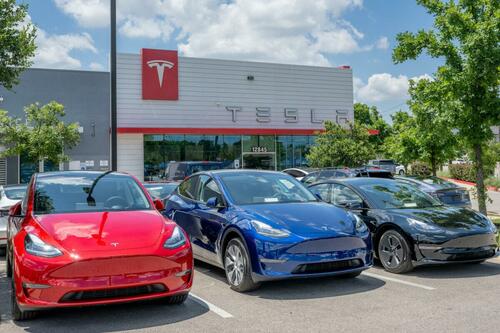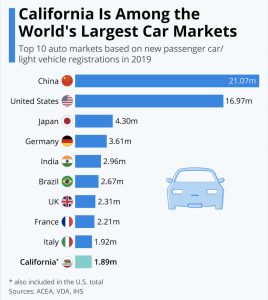Guest Post by Karl Denninger
Let’s cut the crap.
NHTSA has put forward an impossible fuel economy standard.
The “new/old rules” require 49mpg across the entire fleet of vehicles sold by a maker by 2026, and are thermodynamically impossible with internal combustion engines if you sell anything larger than a subcompact and that is barely achievable with a hybrid, two or three-cylinder engine.
Hybrids, I remind you, have consumable battery packs which are expensive to replace and more expensive to buy in the first place.
It is not possible to obtain 49mpg in a light (e.g. 1/2 ton) truck; aerodynamics prohibit it.
This means the only possible way to achieve that “fleet” number is to actually sell a very large number of EVs which are rated at roughly double that number in order to raise the corporate averages.
It cannot be done otherwise; thermodynamics are not the 10 suggestions.
EVs, however, are not green. A half million pounds of earth has to be dug up for just one battery pack which must be moved for processing in huge (diesel-powered) trucks, crushed and then wildly-toxic chemicals used to extract the ores — specifically lithium, cobalt, nickel, copper and others. None of this occurs with a traditional vehicle. The packs are not economically recyclable and requiring them to be will wildly escalate their costs further. Charging said vehicle is approximately equal to running your electric clothes dryer all night long, and the cost of power when you’re not at home is roughly double to triple when you use a “supercharger” or similar; this makes the cost on a per-mile basis higher than that of a gas car in many cases.
We do not have the electrical capacity nor is there any way to generate it using so-called “green” methods to charge these vehicles if a material percentage of the fleet converts. Without power you own a $50,000 brick and being “out” means not going anywhere. What’s worse is that the existing fueling stations are used by a vehicle for about 5 minutes; conservatively it requires 30 minutes to get usable range from an EV, so contemplate where you’re going to get six times the land you have for each fuel station now, plus you will need to place them twice as close together as the average EV range is half or less that of a gasoline vehicle.
Read More
Click to visit the TBP Store for Great TBP Merchandise










